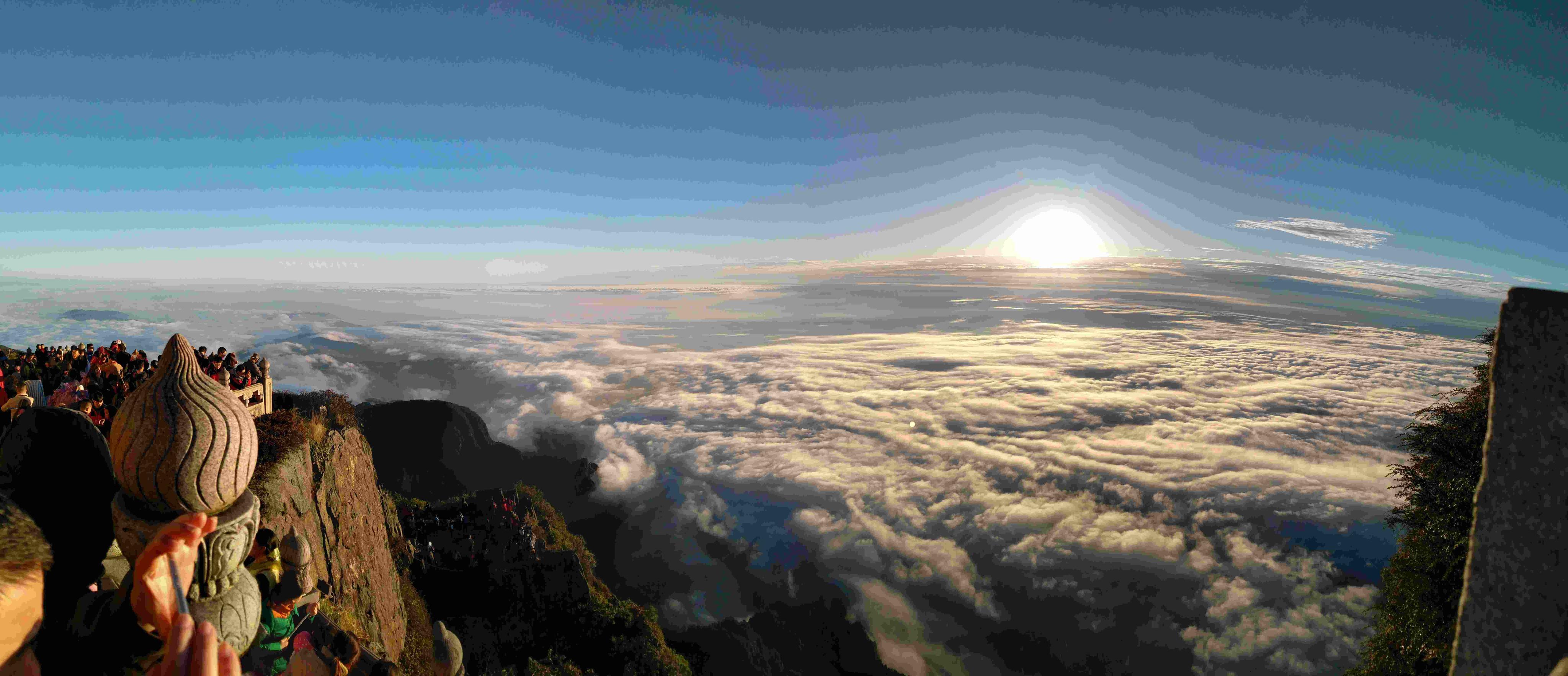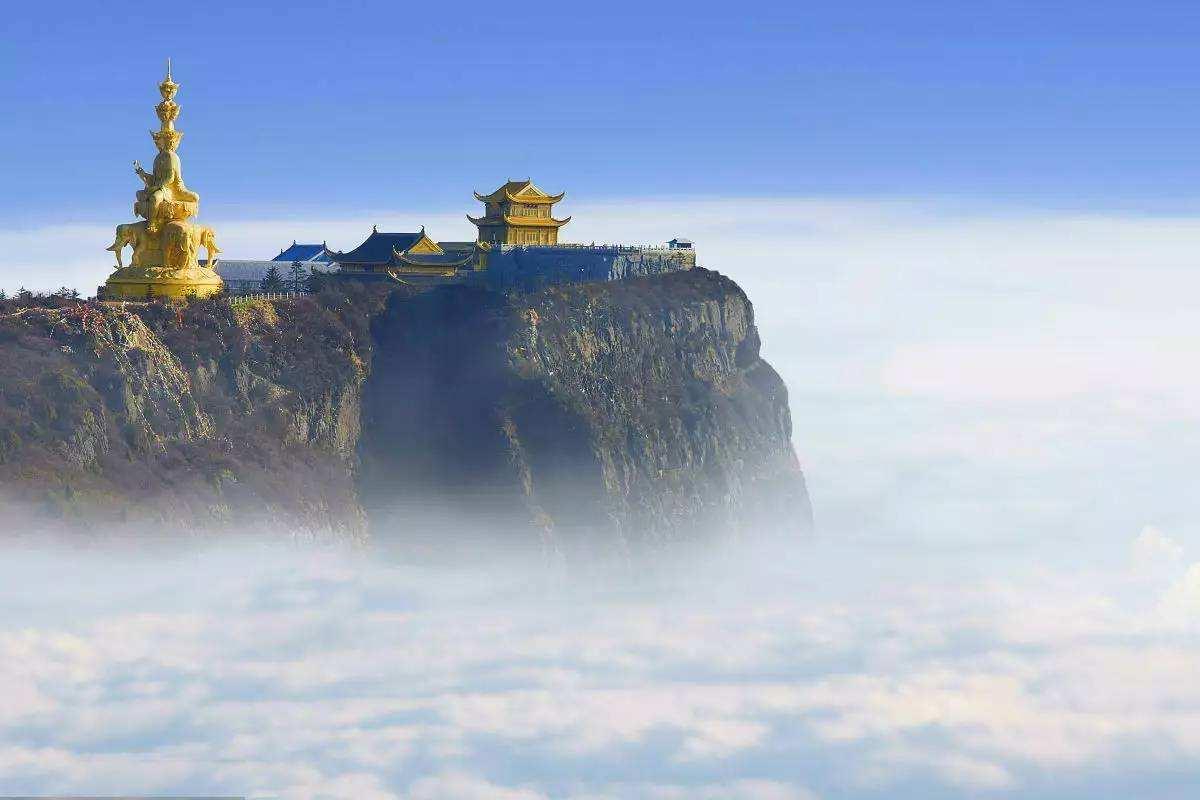Nestled in the western Sichuan Basin, Ermei Mountain rises majestically as a sacred Taoist sanctuary and a natural masterpiece. Known for its lush forests, ancient temples, and dramatic cloud-seated peaks, Ermei is a UNESCO World Heritage Site that offers a harmonious blend of spiritual devotion, hiking adventures, and breathtaking vistas.

Ermei’s history spans over 1,800 years, with its origins tracing back to the Han Dynasty. The mountain became a focal point for Taoist worship after legends emerged of Zhenwu, the God of the North, descending here to protect the region. Today, it remains a pilgrimage destination for devotees seeking blessings and enlightenment.
The heart of Ermei’s spiritual landscape is Hongchi Temple, one of China’s oldest Taoist temples. Built during the Tang Dynasty, its vermilion walls and golden roofs overlook a tranquil lake, symbolizing harmony between heaven and earth. Pilgrims gather here to pray, participate in rituals, and admire intricate stone carvings depicting Taoist deities and celestial beings.
Ermei’s towering peaks and winding trails cater to both casual walkers and avid hikers. The Golden Summit, reaching 3,077 meters, is the highest point, offering panoramic views of mist-shrouded valleys and distant cities. Nearby, the Immortal’s Cave is a natural limestone grotto adorned with ancient murals and inscriptions, said to be inhabited by immortals in local legends.
For a less strenuous journey, the Cloud Path winds through dense bamboo forests, offering serene viewpoints where clouds often linger above the ground, creating an ethereal atmosphere. The 10,000 Steps Trail ascends steeply from the base to Hongchi Temple, challenging hikers with stone steps carved into cliffs—a test of endurance and devotion.
Ermei’s ecosystems are as sacred as its temples. The mountain’s subtropical forests are home to rare species like the endangered giant panda and Sichuan takin. Ancient trees, some over 1,000 years old, provide shade for pilgrims and habitat for wildlife.
The Jade Dragon Snow Mountain, part of the same UNESCO site, lies adjacent to Ermei. Its glacial peaks and turquoise lakes contrast starkly with Ermei’s lush greenery, creating a diverse landscape. Visitors often combine trips to both mountains for a comprehensive experience of Sichuan’s natural wonders.

Practical Insights for Visitors
- Timing: Visit spring (March–May) or autumn (September–November) for mild weather and fewer clouds. Summer brings rain, while winter offers chilly, snow-covered vistas.
- Transportation: Take a bus from Chengdu Railway Station to Ermei Mountain Station (about 2 hours). A cable car (¥120–¥150 one-way) ascends to the Golden Summit. Taxis or shuttles are available for shorter hops.
- Entry: ¥160–¥200 per day, including access to main attractions and temples.
- Altitude: Prepare for elevation gains; carry water and snacks. Acclimatization is recommended for those visiting Jade Dragon Snow Mountain.
- Guided Tours: English-speaking guides (¥200–¥300 per group) provide insights into Taoist culture and history.
- Accommodation: Stay in Ermei’s guesthouses (¥80–¥150 per night) or Chengdu for more amenities.

Ermei Mountain is more than a scenic destination—it’s a transformative journey. Whether meditating in Hongchi Temple’s tranquil courtyards, hiking through misty forests, or marveling at the Golden Summit’s sunrise, visitors encounter a profound connection to nature and spirituality.
As the sun dips below the horizon, casting golden hues over the peaks, Ermei reminds us of humanity’s age-old quest for balance. In a world of modernity, this sacred mountain stands as a timeless refuge, where ancient traditions and natural beauty coexist in perfect harmony.
Come to Ermei, where every step leads to enlightenment, and every view inspires awe.


